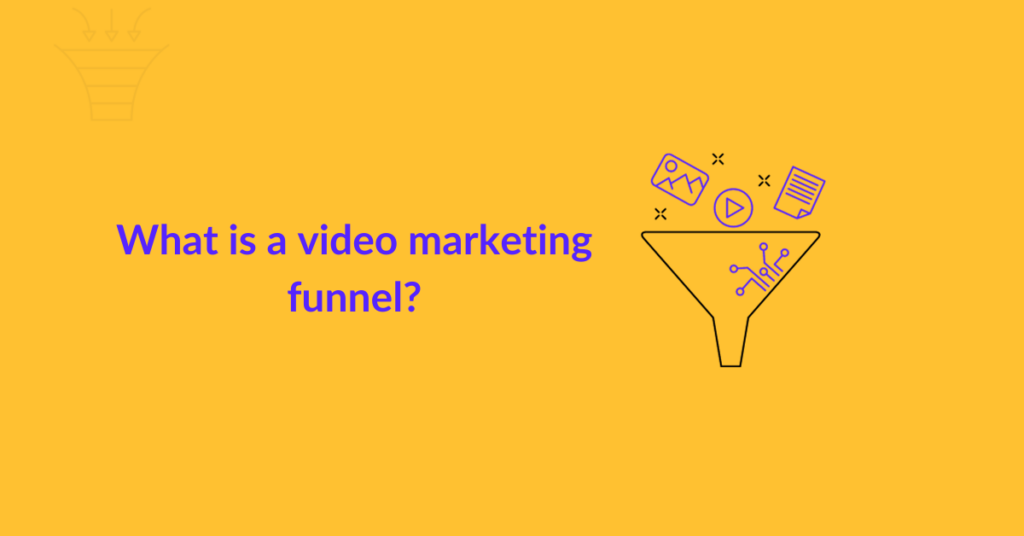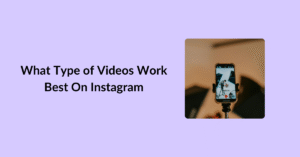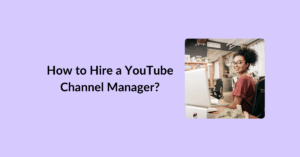Posting videos daily but the views are only trickling in? No subs, no likes, and no comments?
Well, you’re not alone. About 88% of YouTubers find themselves in the same boat. They fail to get attention — let alone convert and make money.
So, what’s the root of this problem? It lies within what we call the viewer’s journey, often referred to as the “funnel” in marketing terms.
Many YouTubers are fixated on producing top-notch video content, pouring their creative energies into it. In this process, they overlook a critical component of YouTube success —the funnel. It is the pathway that your viewers traverse, the journey from where they first encounter your content to where you want to lead them.
In this post, we’ll share the fundamentals of a video marketing funnel and how game-changing it can be for you.
Let’s dive in!
Table of Contents
What is a video marketing funnel?
A video marketing funnel comprises a series of videos that pushes the viewer in a deeper relationship with you. Depending on your niche, industry competition, and positioning, the funnel may be linear or it may not be.
Noah Stambovsky — a video funnel expert — shared great insights on what a video funnel really looks like. And we’ll share that with you in a bit.
But before we get into that, you need to figure out how important a video marketing funnel is for your business. Does it really determine how much money you bag or is it something you could pass on, for now?
For most companies, a video marketing funnel is a funnel within the content marketing funnel.
For example, let’s say you’re large B2B enterprise and you publish content on your blog, social media, email newsletter, groups (such as that on Facebook), or Discord communities. On all of these different distribution channels, you may be publishing text content, video content, or pictorial content.
Each content campaign will have a specific goal — such as:
- Convince the reader to follow/like/share
- Compel the reader to comment
- Make them buy/download a free resource
All of these content campaigns follow either the AIDA model or a specific customer engagement model.
Given this, as a large B2B company, the video funnel may just be a part of the bigger picture for you.
So, if you’re achieving your business goals with some other channel much more conveniently (like blog), you can put video content on hold. You may not need to invest in your TikTok or YouTube.
But if you publish content on only one channel (particularly on YouTube, Instagram, or TikTok), then a video marketing funnel may be the entire big picture for you.
It is the only funnel you should be concerned about.
If that aligns, you cannot pass on your video marketing funnel. You need to get to the nitty gritty of the concept and perfect it for your business.
So, let’s dig deeper.
Key Stages of a Video Marketing Funnel
Typically, a video marketing funnel comprises four stages — and these are often represented as follows:
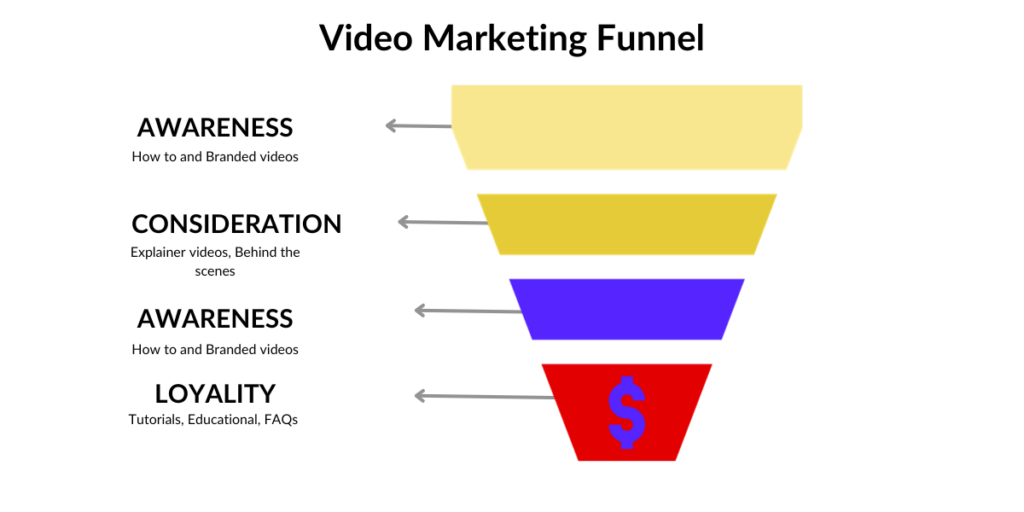
Here’s what each stage is about:
- Awareness Stage: At the top of the funnel, you create video content that attracts a wide audience and raises awareness about your brand, product, or service. These videos should capture their interest by addressing common pain points or interests related to your niche or industry. Ideally, you want your audience to start engaging with your business too (in the form of comments, likes, follows, etc.)
- Consideration Stage: In this stage, your video content should provide in-depth information about your product or service. Demonstrations, tutorials, reviews, and comparisons are common types of videos at this stage. The goal is to help viewers understand the value of what you’re offering.
- Conversion Stage: Here, you aim to convert engaged viewers into customers. Video content may include product demos, customer testimonials, and limited-time offers. The focus is on prompting viewers to make a purchase or take a specific action.
- Post-Purchase Stage: The funnel doesn’t end when someone becomes a customer. Video can be used for post-purchase engagement, such as providing product support, sharing tips and tricks, or encouraging customers to leave reviews and referrals. The idea here is to convert your customer into a brand advocate.
Now, although these four elements are placed linearly one after the other —- the truth is a video funnel is almost always NOT linear.
It’s much more twisted. Check this out:
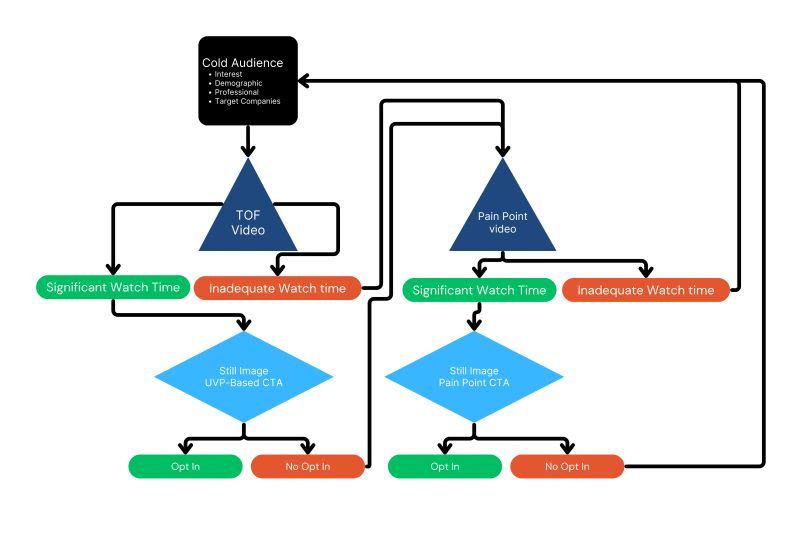
This image is designed by the video funnel expert we mentioned above – Noah Stambovsky.
It represents how to direct your audience from one point of their buying journey to another via video content.
For example, say you coach CEOs on how to maximize their performance.
You can create a TOF (Top of the Funnel) video on the topic: CEO Coach Reacts to Iconic Leadership Moments in Movies
In this engaging video, you can leverage the power of storytelling by analyzing and reacting to iconic leadership moments portrayed in popular movies. This approach combines entertainment with valuable coaching insights, making it more likely to capture the attention of a broader audience, including coaches interested in maximizing their performance.
Let’s say the length of this video is two minutes.
- Anyone who hits the one-minute mark, views the still-image UVP (unique value proposition) based CTA you’ve incorporated in the video – such as: “Subscribe now for daily High-Performance Tips” It could be any type of video ad.
- If they subscribe, yay!
- If they don’t, you direct them to a pain point video (e.g. 5 Strategies for Coaches to Attract High-Profile Clients)
- Those who do not hit the one-minute mark, you instantly direct them to the pain point video – hoping to capture their attention this time.
And from there, you follow the funnel that Noah has outlined for you in the image. We also recommend browsing his detailed LinkedIn post and checking out his value-packed Video Funnels Primer.
Note that Noah’s video funnel is just an example. The video funnel your business needs could be more complex or a bit different from what we see above. So, on that note, we highly recommend seeking advice from a video funnel expert.
Key Components of a Video Marketing Funnel
Now, it is important to note that you cannot build your funnel without the following key ingredients:
- Understanding of your target audience
- Quality video content
- A content strategy
Where do you get these?
1. For Understanding Your Audience
Brainstorm what kind of people are highly likely to buy from you. Next, research your competitors audience and find out what kind of people are buying from them. Collectively, this research should give you an idea of your ideal audience.
As you moved ahead and begin putting out content, you’ll get real-time insights on who is your ideal customers (hint: keep an eye on who is LOVING your content and repeatedly clicks that buy button or follows the CTA).
2. For Quality Video Content
It’s you and us. You ideate, create, and we edit your video content to make it look more punchy, aesthetic, and professional — or you can choose from a service that fits your budget from these Top 15 Video Editing Services to Outsource.
Remember, if you put out unedited or amateur content out there, then that’s the kind of purchasing power you’ll attract. People with minimal budgets…
Unless you’re selling something really cheap, you definitely don’t want that!
3. For Content Strategy
A well-defined content strategy outlines how you will create, distribute, and promote your video content to achieve your marketing goals. It helps maintain consistency and relevance throughout the funnel.
Here are some tips to do it right:
- Set clear objectives for your video marketing funnel, such as lead generation, brand awareness, or sales conversions.
- Plan a content calendar to ensure a steady stream of videos aligned with your funnel stages.
- Consider the buyer’s journey and create content that guides prospects through each stage, from awareness to conversion.
- If you’re creating a series of videos, make sure you publish them in chronological order and create links between different videos to smoothly direct the viewer from one video to another.
- Use SEO research to optimize your video titles, descriptions, and tags to improve discoverability.
- Promote your videos through various channels, such as TikTok, YouTube, Instagram, email marketing, and even collaborations with influencers.
We also recommend reading this thorough guide on how to set up a video content strategy.
Why are video marketing funnels so effective?
Video funnels are effective primarily because they comprise the most engaging media type of all: video format.
According to a report by Insivia, a viewer is likely to retain 95% of the message from a video and only 10% of the message from textual content.
Why? Well, that’s because videos engage quite a lot of senses at once. The viewer is watching, hearing, comprehending, feeling, reading (in case of subtitles), etc This, in turn, leads to a lasting impression, emotional connectivity, and even response generation.
Allow us to put this further into perspective for you…
- People consume 17+ hours of video content every week.
- 96% of people say explainer videos have helped them understand more about a product or service.
- 89% of people admit they have purchased an item/service after watching a video.
So, you see, video marketing funnels are effective because they comprise the most loved type of content format. And a high consumption naturally means higher ROI.
Ready to build your own funnel?
Well, if you’ve read this far, congratulations. You now know all the basics of a video marketing funnel.
If you’re ready to exercise it for your business, hop onto our next guide: How to build a video marketing funnel?
And if you wish to receive expert video marketing tips and strategies right in your inbox, please drop your email in our newsletter subscription section!

